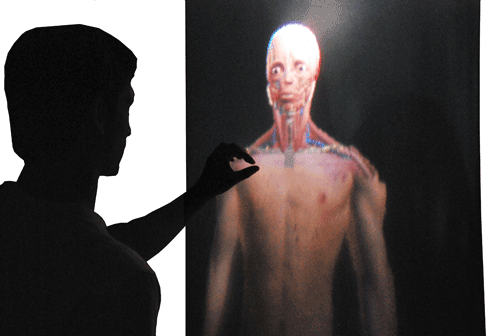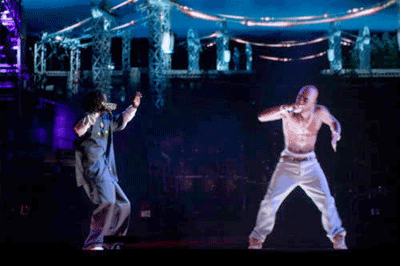TeleHuman device provides Star Trek-like 3D holographic videoconferencing
System uses Microsoft’s Kinect sensors, off-the-shelf hardware to achieve cutting edge technology
A group of researchers at the Human Media Lab at Queen’s University (Ontario) have created a life-sized hologram-like telepod using Microsoft’s Kinect system and a cylindrical display for live, 3D videoconferencing.

The Human Media Lab has come up with a unique way to create a 3D holographic videoconferencing system.
They refer to the technology as “TeleHuman”: it allows two people to stand in front of their own separate pods and talk to 3D hologram images of one other.
How’d they do it?
The group was able to accomplish this trick using six Kinect sensors mounted at the top of both displays. The sensors are responsible for capturing and tracking 3D video of the individual and converting it into a life-size image on the opposite end of the call.
The 3D image that gets displayed is 360 around the pod. This means that the person on the other line can walk around the entire pod and see the caller’s side and back.
“Why Skype when you can talk to a life-size 3D holographic image of another person?” asks Professor Roel Vertegaal, director of the Human Media Lab.
Hardware
The TeleHuman system was constructed with existing hardware. There are the aforementioned Kinect sensors, but to actually project the image, the team positioned a 3D projector at the base of a 5-ft 9-in. (1.8 m) translucent acrylic cylinder, complete with convex mirror.
Other uses
The team also used the pod in another application of their project called “BodiPod”. It’s similar to TeleHuman in that it projects a 3D image of a human body, but what this system does instead is it offers the user the ability to interact with a 3D anatomical model of the human body; that is, through a series of gestures and speech control, the human body can be peeled away, layer by layer, and explored 360 degrees.
Doing this is remarkably simple: The user just approaches the pod and waves a hand, or otherwise gives the system an auditory command, to peel away layers of human tissue.

BodiPod’s labeling app.

BodiPod’s layer peeling app.

BodiPod’s deep layer peeling app.
Why this is noteworthy
3D holographic video is certainly not a new technology: Cisco and Musion systems created an on-stage holographic video conference over 5 years ago, and there is, of course, last month’s much-hyped holographic performance of deceased rapper 2Pac at the Coachella music festival.

Rapper Snoop Dogg performs alongside 3D hologram of deceased rapper 2Pac at Coachella.
What’s unique about the TeleHuman system is how easily accessible it is: It was created using a video game system and some off-the-shelf hardware. Check out the team’s video on the project:
Want to learn more?
Dr. Vertegaal will unveil the TeleHuman and BodiPod systems at CHI 2012, an international conference on human-computer interaction in Austin, TX, May 5 to 10.
Download the team’s papers for free below. ■
Story via: Human Media Lab
Advertisement
Learn more about Electronic Products Magazine





